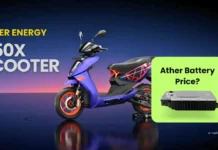Electric vehicle (EVs) needs an energy storage system to power the vehicle propulsion system. Many energy storage systems are there such as batteries, ultra-capacitors, flywheels, fuel cells, and so on.
The battery is the most commonly used in EVs because of its comparatively mature technologies and good energy density and cycle life.
At present, many batteries have been explored for electric vehicle applications like Nickel-cadmium (NiCd), Nickel-Metal Hydride (Ni-MH), and Lead-acid (Pb -H2SO4) but Li-ion battery is found more useful in EV applications.
Why Lithium-Ion batteries are mostly used in Electric Vehicles?
#1. Energy density
It is the measure of energy stored per unit volume/mass.
The higher the energy density the lesser the weight of the battery required for the same range, decreasing the weight of the vehicle. Energy density defines the range of the vehicle while Power density defines the performance of the vehicle i.e.; how fast the vehicle is accelerating. Lithium Cobalt oxide battery has the highest energy density among all other batteries.
#2. Wide temperature operationality
Electrodes and electrolytes determine the temperature operationality of the Li-ion battery. Li-ion battery can work in the temperature range of −20 °C ~ 60 °C with an optimal temperature range of 15 °C–35 °C.
#3. Cycle life
It is defined as the number of charges and discharges a battery can complete before losing performance. The larger the cycle life more the years the Li-ion battery can work. It can be in the range of 400-2000 cycles depending upon the electrode materials used while a Zinc-air battery has only 100 cycles approximately. Tesla claims 1500 battery charge cycles of Li-ion batteries are used in its vehicles.
#4. High Cell Voltage
The cell terminal voltage of the Li-ion battery is around 3.6–3.85 V while that of the Ni-MH terminal voltage is 1.2-1.5 V only. So less number of cells are required to achieve the desired voltage level. Li-ion cell also maintains a nearly constant voltage of 3.6 V irrespective of load. Li-ion batteries also have good Coulombic Efficiency (charge-discharge efficiency) which can be up to 92 %
#5. Self Discharge
Li-ion battery has a very self-discharge rate which is 0.35–2.5% monthly which is about 13.9–70.6 % in NiMH batteries. Li-ion batteries have very little memory effect (which occurs when the battery is charged before its complete discharge so it reduces the longevity of the battery), this effect is mainly found in Ni-Cd and Ni-MH batteries.
So very little maintenance is required for the Li-ion battery.
#6. Support Fast Charging
Li-ion supports fast charging due to the nature of electrodes and electrolytes.
Li-ion batteries work on the principle of intercalation and de-intercalation means intercalating into the anode and intercalating from the cathode rapidly. Tesla Model 3 Li-ion battery can be charged up to 80% just in 40 minutes. The lead acid battery does not support fast charging which can take up to 48 hours.




